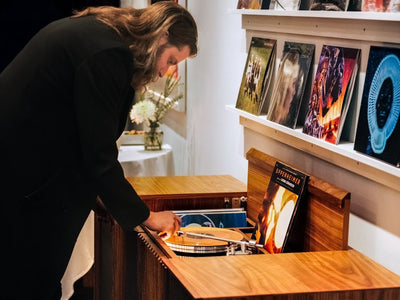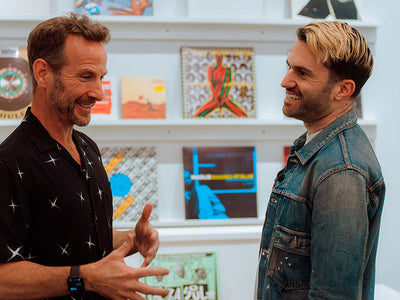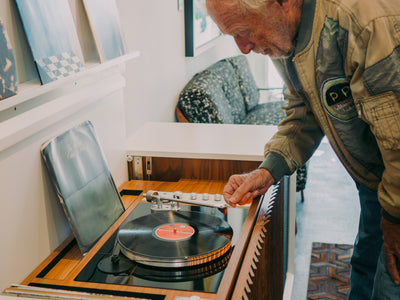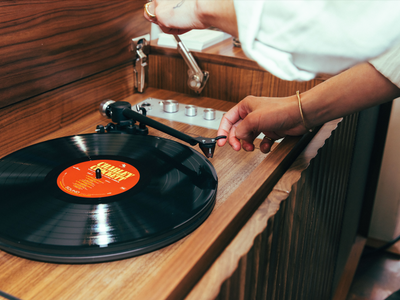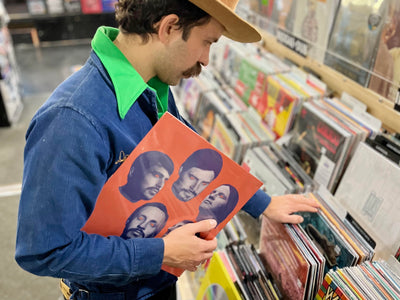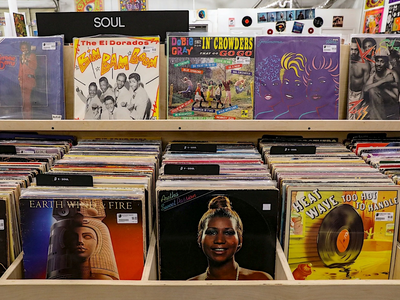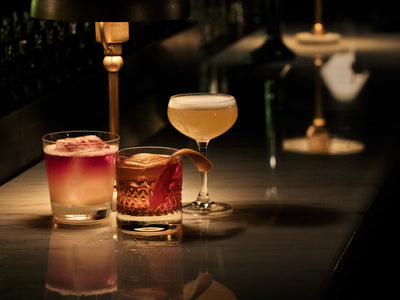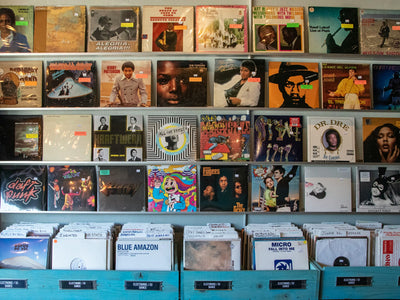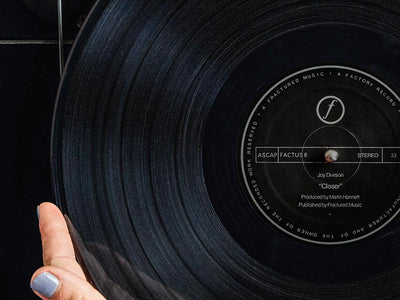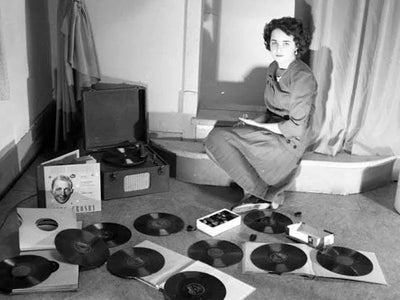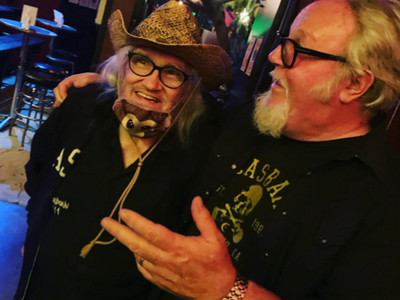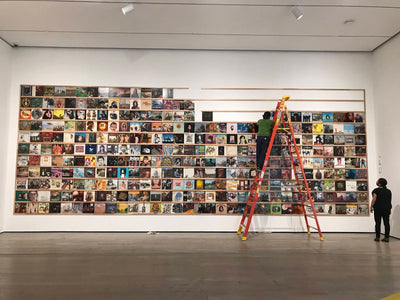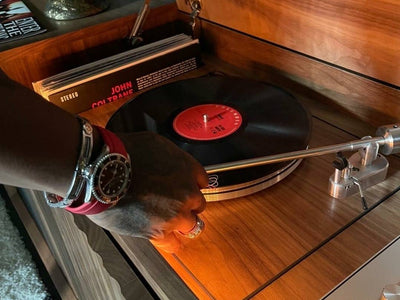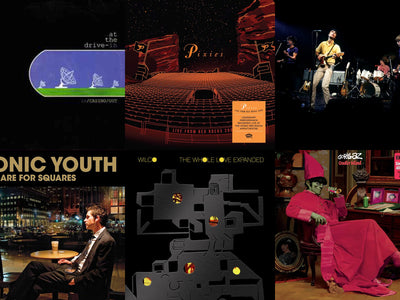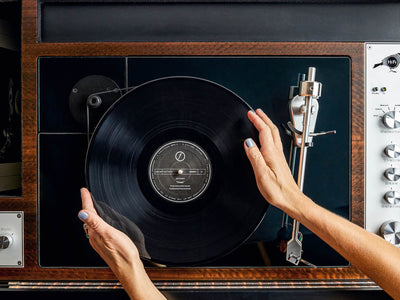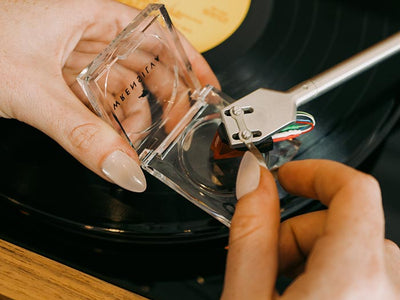World of Wrensilva
The Pursuit of Wrensilva Signature Sound
Warm, true and faithful are the essential qualities of our sound delivery. But the best way to understand Wrensilva sound (without actually hearing it) is by delving into one of...
Wrensilva Presents, Volume 1: Blue Note Selections with Don Was
From an early age, Don Was aspired to be part of the iconic Blue Note jazz scenes of the late 1930s and beyond. The artists dressed in hip suits wore...
At Home With Jim James: A Conversation About One Record
Jim James Photo by: Sheva Kafai Jim James was 21 years old and shopping at Ear X-tacy, the legendary Louisville record store, when he first discovered the George Harrison album that would...
Wrensilva Sound: Listening Sessions with Manny Marroquin
The moon rose high above the storied and artwork-filled Larrabee Studios in North Hollywood where we met revered music mixer Manny Marroquin for a special listening session. Wrensilva co-founder and...
Wrensilva Sound: Listening Sessions with Joe Harley
When Blue Note Records Producer Joe Harley met us at our San Diego workshop, he was carrying a stack of his favorite jazz records, including a few from the label’s...
Wrensilva Presents: The Records That Made Me with Ludwig Göransson
Ludwig Göransson drops the needle on the motion picture soundtrack for Oppenheimer, which received a Golden Globe this year for Best Original Score for a Motion Picture. When Oscar-winning composer...
Wrensilva Presents: The Records That Made Me With A-Trak
In 1997, 15-year old Alain Macklovitch from Montreal became the youngest winner of the DMC World DJ Championship. Devoted to a love for hip-hop, A-Trak found himself scratching hip-hop in...
Wrensilva Presents One Record: Stirring Up Memories of Marley with Island Records’ Chris Blackwell
Light bounces off the walls of the bright Wrensilva Listening Studio in West Hollywood, and sparkles through glasses of golden Blackwell Rum punch. With rum punches in hand, friends and...
A Historic Playback in Room 80 with Chelsea Hotel Resident Music Historian William Benton
The iconic Hotel Chelsea sign adorns the front of the building on 23rd Street If the walls of The Hotel Chelsea had ears, they would be able to solve mysteries...
On the Record with Molly Nutter, President of ByGeorge
Where Luxury Fashion, Lifestyle and Music Meet in Austin, Texas. Austin has long been a magnet for creatives of all types. Musicians have flocked to the city for decades,...
On the Record with Guillermo Paleo of Waterloo in ATX
Vinyl Picks and Local Sounds From The Live Music Capital of the World Five years before South By Southwest started as a modest gathering of artists and music people, Waterloo...
Top Record Stores in San Diego
Photo by Mick Haupt on Unsplash Given San Diego’s rich music scene, it shouldn’t come as a surprise that a vibrant vinyl culture flourishes here. Looking at the city throughout...
Connecting over cocktails with Death & Co.’s Dave Kaplan
It’s all about the prep Autumn weather beckons fall flavors. As we lean into pumpkin spice season, we turned to Death & Co. founder Dave Kaplan for some tricks and...
Photo by Mick Haupt on Unsplash Few things are better than pulling out a vinyl record for an intimate listen. In our digital age, it's a relief to slow down....
There are several prongs to the “does vinyl sound better” debate, with arguments rooted in sound quality and listener experience. Though “experience” isn’t necessarily directly tied to sound, the tactile...
A Brief History of Vinyl Records
Galt Museum & Archives/Flickr Commons Vinyl records brought music listening to living rooms in a revolutionary way. The mass market availability and multi-track format, coupled with the evolution of home...
On the Record with Vinyl Junkies
Records and community in South Park, San Diego Tim Mays (@mrmazee) has been a stalwart in the San Diego music scene for decades. His club, The Casbah, provided a launch...
Crate Digging with the World's Top Vinyl Record Collectors
For some, the thrill of finding an original pressing of an obscure bossa nova record is not far off from winning the lottery. Crate digging in a record store or...
Building The Perfect Harmony in a HiFi Record Console
“Does it sound good?” was the central question percolating in the minds of the Wrensilva audio engineers as the team built their first all-in-one record console. Turns out, good was...
The Best Record Stores for Shopping Record Store Day 2024
The Record Store Day (RSD) concept was sparked by a passion for independent record shops and the culture that they support. There truly is something special about how a...
Record Console Concert: The Return of the Family Dance Party
Photo credit: Lauren Thomas / The Thomas family Once upon a time, dropping the needle on a record loved by the family unit after dinner was the norm. No screens...
Introducing Jack Daniel’s® x Wrensilva®
Rare Materials and HiFi Collide To Support Musicians Photography: Jack Daniel's “Our collaboration with Jack Daniel's speaks loudly to the spirit of HiFi, reaching deep into our shared belief in...
For John Van Hamersveld and Wrensilva, Digital and Analog Go Hand in Hand
The legendary artist, designer and photographer blends art, music and design in the Wrensilva® x John Van Hamersveld poster collaboration. “I hope it makes you feel something,” John Van Hamersveld...
How to Design the Ultimate Music Room In Your Home
These designers are dishing on how to create the best home audio experience When it comes to designing the ultimate home music room, our favorite interior designers say it’s not...
Wrensilva x Gold-Diggers - Making Music in Hollywood
A perfectly tuned bar, venue, boutique hotel, and recording studio “There’s a nostalgia and vintage element to something you can hold and grasp.” That’s one of the first things...
How to Start, Build & Preserve a Vinyl Collection
Your record collection provides the soundtrack to your life, and if you take good care, it will last forever. If you have some vinyl already, maybe you want to expand...
Cleaning the record needle of a Ortofon 2m Red MM Cartridge on Wrensilva turntable. Vinyl naturally has a sound that feels more organic and “present.” Little crackles and pops are...






